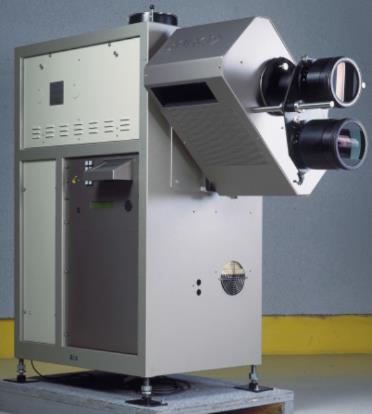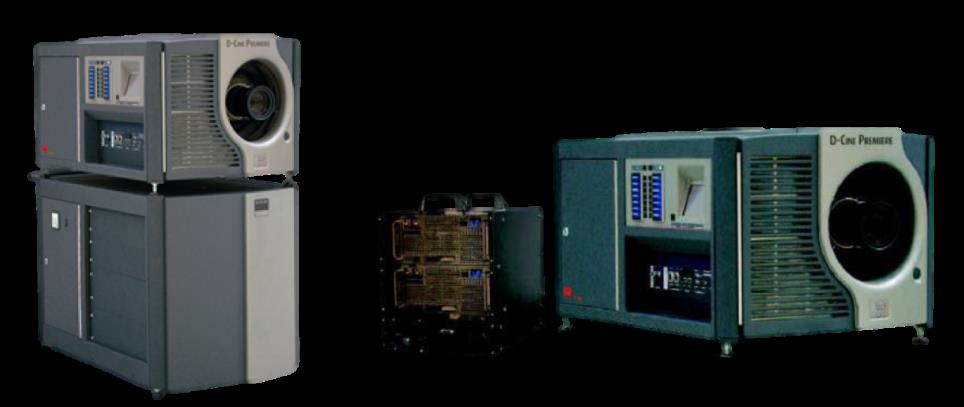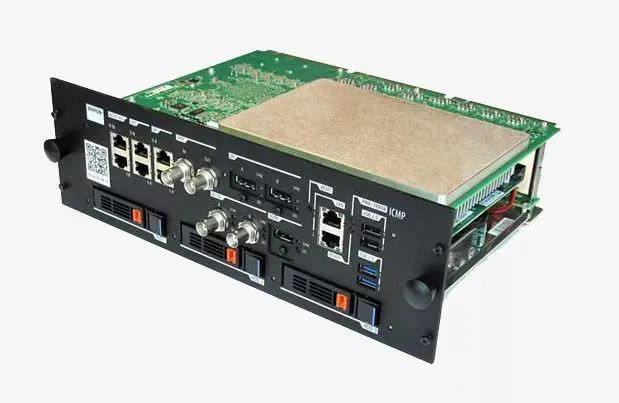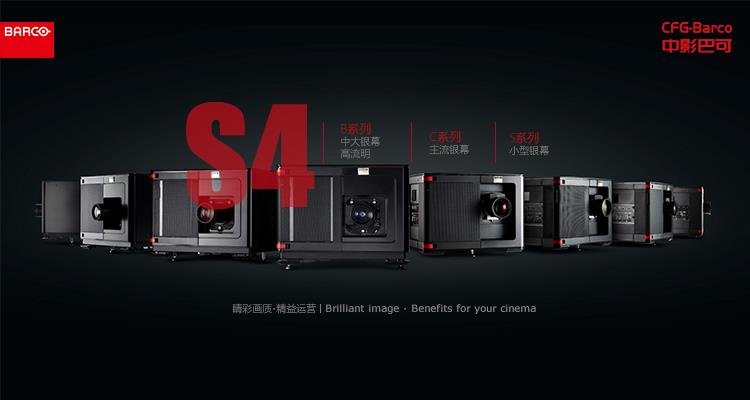The evolution of the "behind-the-scenes" of cinemas

Before Ivey’s film, he pushed a popular science article on screen technology, which attracted everyone’s attention. Today, let’s pay attention to the "behind-the-scenes" that is related to the screening effect-the projector.
Film projectors have become a memory for most people, and today’s cinemas have already become the world of digital projectors. Let’s briefly talk about the development history of digital projectors.
Advances in chip technology and resolution
Digital film projectors can be divided into 4K, 2k and 1.3k (obsolete) according to the resolution from high to low, and the core part is the DLP chip.
The digital film projector that appeared at the end of last century and the beginning of this century is1.3K(1280×1024, about 1.3 million pixels) resolution.. Its architecture is a DLP projection system with a digital projector head in front of the light box of the traditional film projector, and its imaging device is the DLP CinemaTM DMD digital micromirror device of Texas Instruments (TI).

DP50 1.3K digital projector
DLP technology (digital light processing) is a technology developed by Texas Instruments based on DMD. DMD (digital micromirror) is also an imaging chip developed by TI, and it is also the core component of DLP. DMD consists of many small aluminum mirrors, and each micro mirror is called a pixel. Its working principle is that after receiving the image control signal, it drives the micro mirror to deflect within 15 degrees, reflects light, and finally forms an image. Digital film projectors and high-end projectors generally adopt RGB three-chip DLP technology.
With the development of chip technology,The first 2K (2048× 1080.21 million pixels)The projector came out at the end of 2003, which adopted the DC2K DLP CinemaTM DMD chip of TI company, which improved the image resolution and contrast. This eliminated the projector that originally used 1.3K chip.

DP100 and DP90 2K digital projectors
In 2005-2006, DCI (Digital Cinema Advocacy Organization) released the technical specification 1.0 of digital cinema system, and various digital cinema equipment manufacturers followed suit, and developed and produced projector products conforming to DCI technical specification. According to DCI standard, the pixels of digital cinema projectors should reach 2K or 4K. Projector manufacturer including DLP technology, Barco, CTV and NEC, as well as Sony adopt liquid crystal on silicon SXRD technology, have launched a series of products.
In 2009, TI released its second generation DLP digital film platform.DLP Cinema? Series II (SII or Series 2 for short). S II not only supports all the functions of the previous generation SI platform, but also enhances the signal processing ability of the system, and conforms to the DCI Digital Cinema System Technical Specification 1.2 in application.
In 2011, based on DLP Cinema? 1.38 "(inches).DMD 4K chipThe resolution reached 4K (4096× 2160,825 million pixels). In addition, in order to meet the needs of more small screens, the advent of 0.69 "DMD2K chips based on DLP Cinema has led manufacturers to launch DLP large projectors and small projectors based on these chips. With the advent of DLP4K projector, digital projection is comparable to 35mm film projection in definition, and the overall projection visual effect is better.

2019 4K global blockbuster "Maleficent: Mistress of Evil"
In 2013, TI (Texas Instruments) DLP Products Division launched a new breakthrough pixel architecture for its leading DLP Pico? technology.TIlt Roll Pixel(TRP). The main advantages of products based on the new TRP pixel architecture include:
Improve brightness by up to 30% and higher efficiency; Energy saving by reducing power consumption by up to 50%; Twice the resolution of chips of the same size, and so on. For example, the s4 series of Barco’s fourth-generation projector is the latest series of digital projector products that take the lead in adopting 3×0.98” DC4K TRP chip, which can save more energy and further improve the degree of integration.
Progress in architecture and automation
The innovation of digital projection technology makes the control of equipment more and more automatic and intelligent.
Due to high integration and strong sealing performance,Heat dissipation and dust preventionIt is the most difficult problem of projectors in the past. In the past, when solving these two problems, the projectionist was particularly required to maintain the projection equipment in peacetime, but with the upgrade of the projector, the handling of these two aspects has now become simpler and more convenient.
The heat dissipation of the projector mainly surrounds the light source, chip and circuit. These places are easy to accelerate aging or damage if the heat dissipation is not in place, and attention should be paid not to have any dust when cooling. For example, high-precision core components such as chips cannot be polluted by any dust.
Now there are several ways to cool the projector:Air cooling, liquid cooling, and semiconductor cooling.. Air cooling mainly depends on the cooling channel designed in the projector; Liquid cooling is mainly aimed at the internal heat dissipation of the engine, and there is a set of liquid cooling heat dissipation system composed of liquid tank, pressure pump and heat exchanger in the projector. Semiconductor cooling, like using "Peltier" thermoelectric semiconductor refrigeration device.
Barco s4 projector series inherits the consistently efficient integrated cooling system of liquid cooling+air cooling+Peltier, and with the fully enclosed engine and light path design, the new double-layer HEPA washable filter screen can achieve the ultimate dustproof and efficient cooling effect. At the same time, the modular design of S4 series and brand-new network control and analysis software make the daily maintenance and repair of projectors easy, which greatly reduces the labor cost of daily operation and maintenance.
In addition to the continuous improvement of automation level, the projector architecture is also constantly optimized. From the original independent external server to the integrated media module IMB, to today’s integrated media server with higher integration.IMSsSome even integrate audio decoding module, which has higher integration and improved performance.
For example, in March, 2014, Barco first launched a product equipped with Lingrui.ICMP(Integrated Cinema Media Processor integrated media module) integrated projector of server. The ICMP module of Barco Lingrui skillfully integrates the digital movie image signal processor (ICP) with the media server responsible for the decoding function of DCI movie programs, which improves the simplicity and reliability of the projector. Intelligent projectors equipped with Lingrui ICMP can even detect potential operational errors and warn users when potential failures occur.

ICMP server
The historical origin of digital projector from the initial independent external server to the integrated media module IMB to the integrated media server IMSs with higher integration now comes from the actual demand of the film industry for higher image quality, higher frame rate and higher resolution. In the technical field of projectors and media servers, this can be summarized as follows,Need to pass a higherbandwidthTo process and transmit image data. This has become the driving factor of digital projectors from independent servers to IMBs(Integrated Media Blocks) and then to IMSs (Integrated Media Server) from 2005 to 2012.
In addition, in recent years, digital projectors are constantly strengthening their targeting.Automatic maintenance and optimization technology of laser light source and automatic image optimization technologyWith the passage of time, the white balance of the three-color laser light source of the projector is guaranteed and the color reproduction is better; The final imaging quality of the optical engine has been kept at a good level for a long time.
Progress in technical indicators
The technical progress of projector naturally promotes the improvement of its related technical indicators, so as to adapt to the landing of new projection technology.
For example, adapting to high frame rate projection, adapting to HDR (high dynamic range) image optimization, etc., requires a higher projectorBrightness, contrast, clarity and high color depth processing circuit, at the same time haveHigh frame rate projectionFunction.
The 1.3k machine adopts the 1.1 "/0.9" (inch) DLP CinemaTM DMD chip of TI company, with the contrast ratio of 1350: 1 and the deflection angle of DMD micromirror of 10. The final light output is about 6,000-13,000 lumens, and its light efficiency is relatively low, with the average light path light efficiency of 1-2 lumens/watt. At first, the 1.3k machine can handle Bit depth.
The second generation projector chip (DC2K DMD chip) comes in 1.2 "(inch) and 0.98" (inch), which were released by TI in 2003 and 2007 respectively. Compared with the 1.3 K chip, DC2K DMD chip increases the deflection angle of DMD micromirror by 12, making its contrast ratio more than 2000∶1. The light output of 2K projector can reach 30,000 lumens, and the color depth can reach 15 bits ×3. Moreover, the support for secure encryption/decryption, from supporting Cine I to supporting Cine II, meets the strict requirements of digital cinema for content security protection.
The 4K digital projector based on DLP Cinema? 1.38 "(inch) DMD chip has a brightness of 32,000 lumens and a contrast ratio of more than 2,100: 1.

S4 series projectors
Now the projector has a higher level of indicators. On BIRTV in 2020, Barco introduced the high-brightness RGB laser projector SP4K-40B with 40,000 lumens in the fourth-generation projector family, and introduced the RGB laser projector SP4K-55B with 52,000 lumens in CinemaS in 2021. In this fourth-generation projector family, the contrast ratio can reach 5,000: 1 like SP4K-27BHC.
In addition, with the improvement of light source, RGB laser projector has also improved the color range of the picture from DCI-P3 to.Rec2020, the color range is expanded by about.thirty percentFinally, due to the replacement of TI DLP technology, the fourth generation projector of Barco, which currently adopts the latest technology of TI, also has the ability to play.4K high frame rateThe ability of (high frame rate means > >24fps) greatly exceeds the original traditional signal format. Although there are not many such movies, the projector hardware is still ahead.
It can be said that the projection visual effect provided by the current digital projector has far exceeded the film projector era, providing a better viewing experience to a greater extent, and at the same time bringing higher intelligent automation to the operation, use and maintenance optimization of the cinema, making the cinema have a wider choice for different screens, different technical requirements and automatic projection, and greatly enhancing the security of film copyright!
(Source: UME Studios (Chongqing Jinsha Store); Wentu Source: Zhongying Barco)